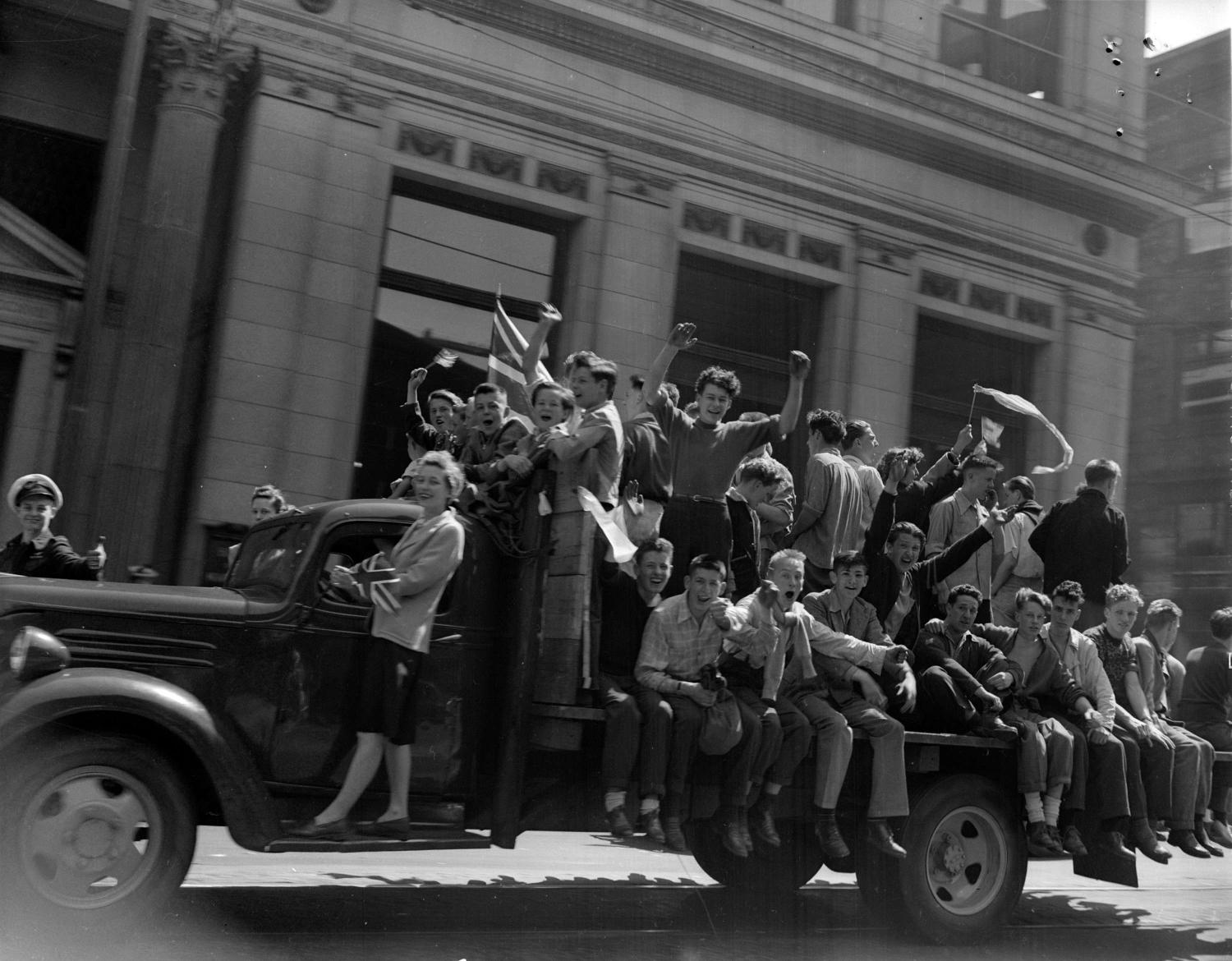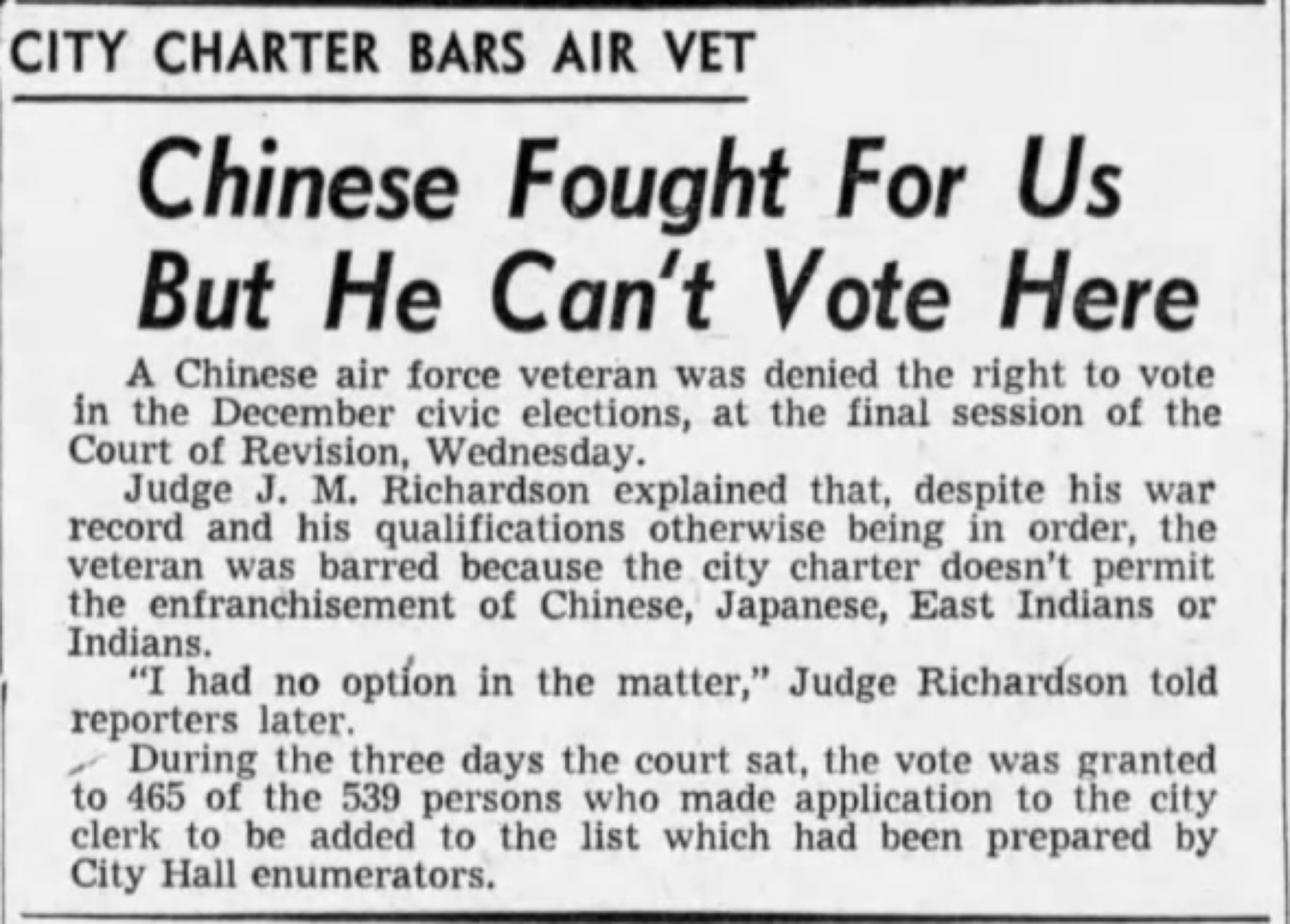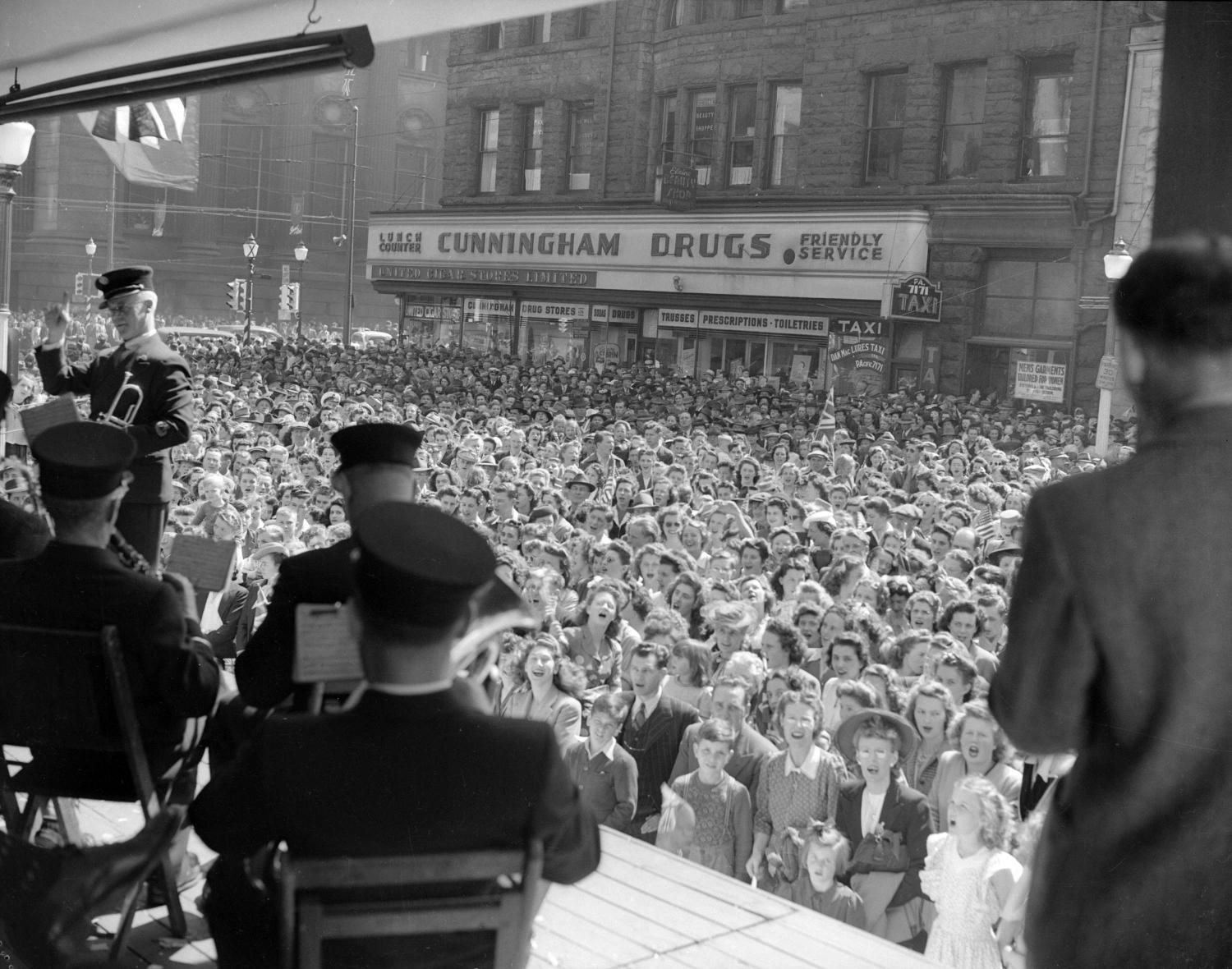Second World War Ends
Soldiers return to a booming economy, soaring population and ongoing racial discrimination
Date: 1945
On May 8, 1945, Nazi Germany officially surrendered to Allied forces. The European theatre of World War II was at last over. That day — which came to be known as Victory in Europe Day (VE-Day) — war-weary people across the western world flooded the streets to celebrate this newfound peace. “Let us rejoice in the victory for which we have waited so long, and which has been won at so great a price,” Prime Minister William Lyon Mackenzie King told a relieved nation.
But the war hadn't yet let up in the Pacific. Fighting continued through the summer until early August when atomic bombs dropped by American B-29 bombers wreaked horror in Hiroshima and Nagasaki. The only-ever use of nuclear weapons in war instantly killed tens of thousands of innocent Japanese civilians. Many more later died from side effects like cancer and other illnesses linked to radiation poisoning. Within days, Japan surrendered, citing the devastating impact of “a new and most cruel bomb.” The bloodiest war in human history had finally come to an end.
An estimated 70 million people, combatants and civilians, died in those six years, including more than 40,000 men and women from the Canadian armed forces. Among all provinces, B.C. had the highest per-capita rate of enlistment. Nearly 120,000 British Columbians enlisted; close to 3,500 never made it home.
The fortunate British Columbians who did survive returned to a booming economy and a fast-growing population. Canada’s all-hands-on-deck attitude had reinvigorated industry and opened the door to more women in the workforce. Meanwhile, B.C.’s population had reached one million by 1945, swelling by a couple of hundred thousand since the start of the war. And the baby boom didn’t let up. Today, there are more “Baby Boomers” — those born between 1946 and 1965 — per capita in Canada than in any other G7 nation.
Canadian veterans received considerable support from the government upon their return. The newly-established Department of Veteran Affairs ensured that service people received medical treatment, as well as subsidized education and housing. By law, veterans couldn’t lose their job for serving, but those who previously didn’t have a job now had access to vocational training and other employment support. The government also helped service people buy land to start a farm or build a home. And for veterans not interested in school or land, there were so-called “re-establishment credits” that helped them renovate their homes, buy furniture or start a new business.
Canada’s transformation after WWII extended beyond a whirring economy and a soaring population. The wartime sacrifice of long-marginalized Canadians — the Chinese, Sikh and Indigenous who served and the thousands of Japanese who peacefully accepted their unjust internment — placed scrutiny on the country’s own commitment to equality. Many veterans of colour became passionate advocates for civil rights, particularly universal suffrage. Their advocacy paid off. By the end of the 1940s, British Columbians of Chinese, Japanese, South Asian and Indigenous descent could vote in provincial elections. Still, social progress unfolded in fits and starts, and deep, systemic inequality persisted.
Sources:
- “Analysis: Population by Age and Sex.” Statistics Canada, 2018, www150.statcan.gc.ca/n1/pub/91-215-x/2018002/sec2-eng.htm.
- “Back to Civvy Street: Post-War Veteran Re-Establishment.” Veterans Affairs Canada, 14 Feb. 2019, www.veterans.gc.ca/eng/remembrance/history/historical-sheets/civvy.
- Barman, Jean. The West Beyond the West: A History of British Columbia. 3rd ed., University of Toronto Press, Scholarly Publishing Division, 2007.
- Clippingdale, Richard T., et al. “History Since Confederation.” The Canadian Encyclopedia, 7 Feb. 2006, www.thecanadianencyclopedia.ca/en/article/history-since-confederation.
- “Democracy at War: Canadian Newspapers and the Second World War.” Canadian War Museum, www.warmuseum.ca/cwm/exhibitions/newspapers/intro_e.html. Accessed 26 Apr. 2021.
- Fisher, Max. “The Emperor’s Speech: 67 Years Ago, Hirohito Transformed Japan Forever.” The Atlantic, 15 Aug. 2012, www.theatlantic.com/international/archive/2012/08/the-emperors-speech-67-years-ago-hirohito-transformed-japan-forever/261166.
- Ministry of Citizens’ Services. “Population Estimates.” Province of British Columbia, 21 Apr. 2021, www2.gov.bc.ca/gov/content/data/statistics/people-population-community/population/population-estimates.
- Roy, Patricia. The Triumph of Citizenship: The Japanese and Chinese in Canada, 1941–67. UBC Press, 2007.
- “Second World War Timeline.” The Canadian Encyclopedia, www.thecanadianencyclopedia.ca/en/timeline/second-world-war-timeline. Accessed 26 Apr. 2021.
- Stacey, C. P. “Second World War (WWII).” The Canadian Encyclopedia, 15 July 2013, www.thecanadianencyclopedia.ca/en/article/second-world-war-wwii.
- University of British Columbia. Record of Service in the Second World War. Vancouver, British Columbia, Grant-Mann, 1955.
- Woodcock, George. British Columbia: A History of the Province. First Edition, Douglas & McIntyre Ltd, 1990.
- Wright, Glenn T. “Veterans’ Land Act.” The Canadian Encyclopedia, 7 Feb. 2006, www.thecanadianencyclopedia.ca/en/article/veterans-land-act.





